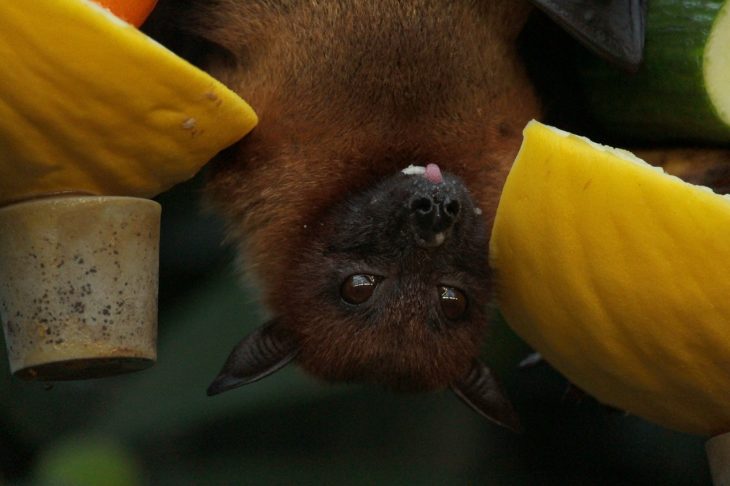
Bats are the only mammals on the planet that are capable of flight. These creatures of the night also help decrease the number of pests and insects that could be considered a nuisance for humans. However, despite how amazing these tiny creatures are, many do not take kindly to them. Here are some amazing bat facts that can help you better understand these animals and appreciate them more.
- The word “bat” was first used during the 1570s.
- Generally, bats have better flying skills than birds.
- Most bats are nocturnal and will seek shelter in dark areas such as caves and similar places.
- Bats can be found in all regions of the world apart from areas with extremely cold climates.
- Bats are considered important because they help pollinate flowers and disperse seeds around their environment.
- In some parts of Asia, bats are used as one of the many food sources.
- Bats are also capable of spreading diseases such as rabies and other pathogens.
- In many cultures, bats are also associated with witchcraft, vampires, malevolence, and death.
- Bats belong to the Animalia kingdom.
- Bats are highly sociable and long-lived creatures.
- Bats consume insect pests that may be of nuisance to humans.
- Bat dung has often been used as fertilizer for tropical plants.
- Bats aren’t related to rats or other rodents.
- Flittermouse is an Old English word for the bat which references the fluttering of their wings.
- Bats are the only mammals on the planet capable of sustained flight.
Bat Facts Infographics
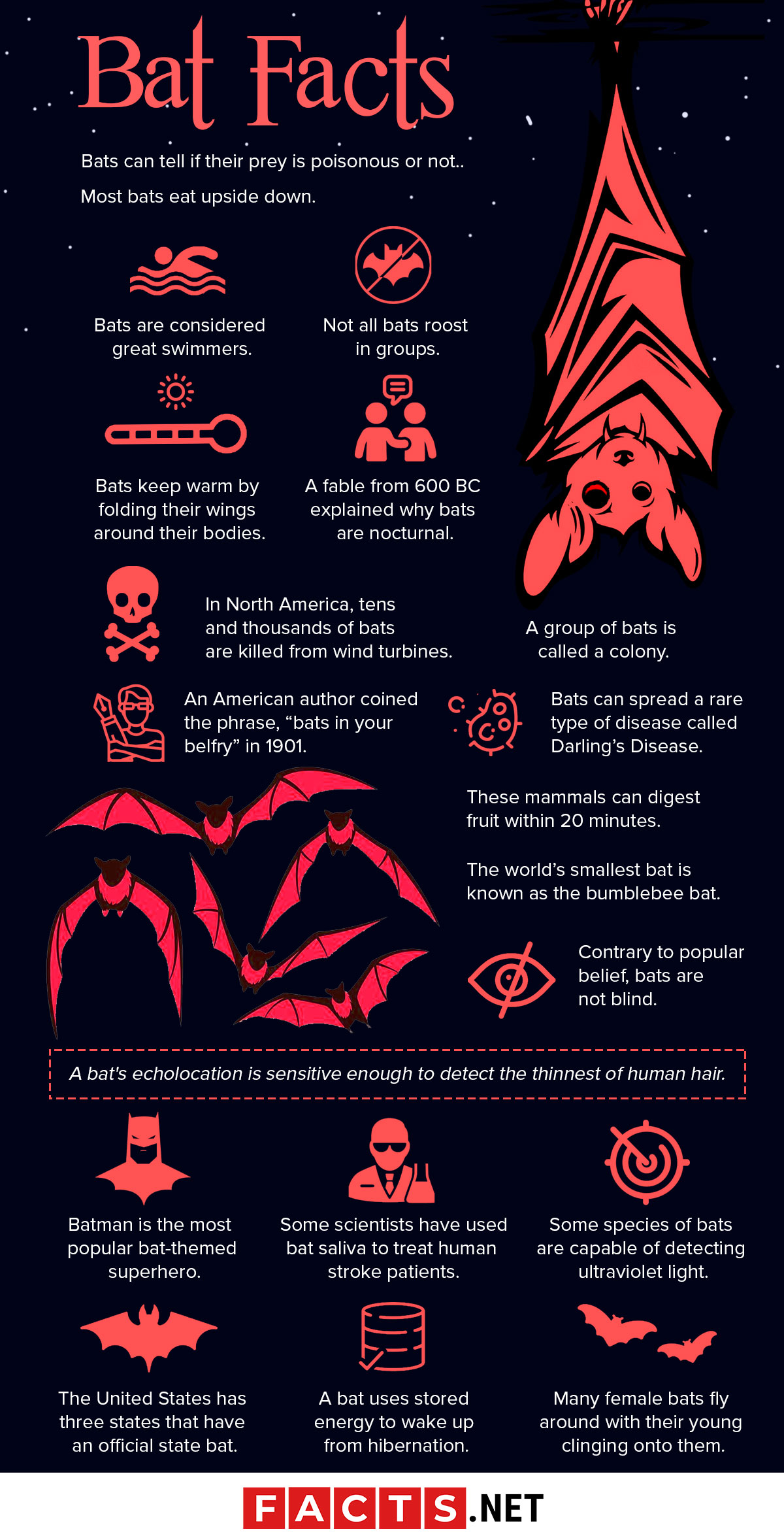
Bats can tell if their prey is poisonous or not.
These mammals carefully listen to the kind of call that their prey makes. Bats have an excellent sense of hearing and have learned to differentiate frogs according to their calls.
Scientists have discovered that these pitches can be easily distinct for bats due to their ultrasonic hearing.
Most bats eat upside down.
Many bat species also sleep, mate, and even give birth while upside down. Additionally, because bats have short legs, they cannot form a running start to fly.
Instead, bats drop down from high places to gather enough speed to fly around. Hanging upside down also allows bats to hide from its predators, especially at night.
Bram Stoker’s 1897 novel Dracula first associated bats with vampires for its blood-sucking traits.
The story of Count Dracula was inspired by the blood drunkenness of vampire bats discovered during the 19th century.
In North America, tens and thousands of bats are killed from wind turbines.
Rather than being killed from hitting the wind turbine itself, bats are killed from the change in air pressure. When flying near the wind turbine, a sudden drop in air pressure is sensed by the bats.
This causes the small blood vessels in their lungs to explode, instantly killing them.
Bat droppings were once used to make gunpowder during the American Civil War.
These droppings were commonly harvested during the 18th century from caves and were used to manufacture gunpowder. During the 1860s, caves in the southern confederate states of America were used to mine bat droppings to produce saltpeter.
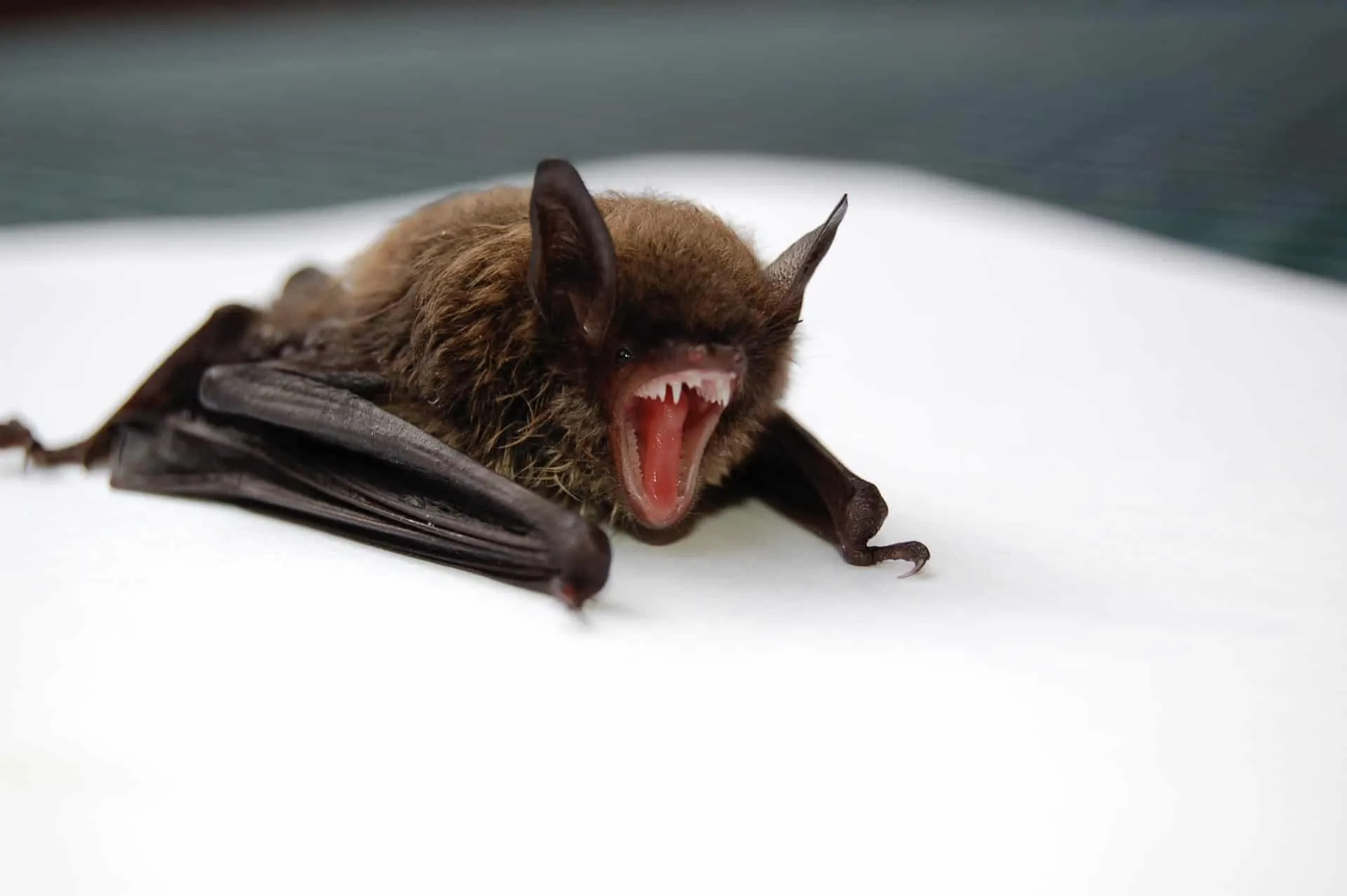
An American author coined the phrase, “bats in your belfry” in 1901.
George W. Peck first coined the phrase in his 1901 book, Peck’s Uncle Ike and the Red-Headed Boy. The phrase describes a person acting crazy, overly silly or eccentric.
A fable from 600 BC explained why bats are nocturnal.
A tale from Aesop described the bat’s nocturnal nature in a pretty comical way. According to the fable, the bat once borrowed money to start a business. However, this business ultimately failed, and the bat had to hide from creditors during the day to escape paying the debt.
The Greeks and Romans often believed that people who adapt to a nocturnal schedule are considered as bats.
Bats can spread a rare type of disease called Darling’s Disease.
Also known as Histoplasmosis, Darling’s Disease is a systemic fungal disease caused by inhaling dust contaminated by the disease. This is typically common in rural areas of the midwestern United States, but can also be transmitted from other countries in the world.
Common transmission of this disease can occur in caves that contain bird or bat droppings.
The film The Devil Bat features a fictional killer bat that goes on a rampage.
This 1940 black and white film was produced by the Producers Releasing Corporation (PRC) as their first feature horror film. The story revolves around a scientist seeking revenge for being insulted by his employers through mutating and enlarging bats.
In the film, he trains them to kill his employers and their families, with and the killer bat going on a killing spree. How’s that for dark bat facts?
The world’s smallest bat is known as the bumblebee bat.
Also known as Kitti’s hog-nosed bat, this tiny bat measures about the size of a large bumblebee. To further illustrate, its average weight totals two Skittles candies.
A group of bats is called a colony.
Another collective noun that describes a group of bats is a camp. Baby bats are also called pups. Sometimes, people also refer to a group of bats as a cloud.
A bat uses stored energy to wake up from hibernation.
These bats typically use the energy they stored between 30 to 60 days during hibernation. Bats will huddle together in caves to keep warm during the winter and occasionally wake up to eat food and go back to sleep.
Not all bats roost in groups.
Many bats such as red bats and hoary bats often roost alone. The most common bat roosts can be found in caves, mines, and as well as barns.
A group of bats can contain around 100 to several thousand individuals, depending on the region they are inhabiting.
Contrary to popular belief, bats are not blind.
Bats can see well thanks to their extrasensory abilities that allow them to distinguish their environment as well as other species. However, bats tend to be sensitive to light when hunting in the dark.
Scientists have also found that bats generally avoid artificial light.
Batman is the most popular bat-themed superhero.
Batman is one of the few superheroes who does not have any supernatural powers of any kind. His secret identity is Bruce Wayne, who brands all of his superhero gadgets, accessories, and vehicles after his bat-themed persona.
Batman gained popularity around the 1940s with his comic book title which eventually led to several animated features and series. Today, Batman is considered one of the most popular superhero icons in modern pop culture.

A bat's echolocation is sensitive enough to detect the thinnest of human hair.
When a bat uses its echolocation, they emit rapid-fire high-frequency clicks. Their ears also move around to act as a radar to catch the echo of their clicks.
This ability allows bats to maneuver flawlessly through the air at night which gives them an advantage when hunting for insects or seeking fruit.
Some scientists have used bat saliva to treat human stroke patients.
Bat saliva has been discovered to have a prominent compound with the potential to medically treat strokes in human patients. Known as DSPA, the compound can thin the patient’s blood to relieve and prevent clots.
The United States has three states that have an official state bat.
These three states include Virginia, Texas, and Oklahoma. The official state bat of Virginia is the Virginia big-eared bat.
Additionally, the state of Texas and Oklahoma officially share the Mexican free-tailed bat as its official state bat. How’s that for interesting bat facts?
Some species of bats are capable of detecting ultraviolet light.
The Pallas’s long-tongued bat resides in South and Central America. This species stands out for its sensitivity to ultraviolet light. Scientists have found that these species of bat can detect a wavelength of up to 310 nm.
Many female bats fly around with their young clinging onto them.
During the first few weeks after birth, the mother bat will typically have its young clinging onto them until they can fly themselves. The baby bat clings onto the mother’s underarm nipple with their mouth or hangs by their mother’s waist with their toes.
If the baby falls, the mother will react instinctively and swoop in to catch their young. Definitely one of the more interesting bat facts.
The bat with the longest tongue is known as the Anoura Fistulata.
Also known as the Nectar bat, this species was first discovered in 2005. Relative to its body length, this bat is known to have the longest tongue among mammals its size.
The nectar bat uses its long tongue to drink the nectar of many plants and also helps it reach nesting insects and pollen.
Most bats commonly have a brown or black color.
To help them blend in with the night bats generally come in dark colors. However, it is not unusual to find bats with grey or red-colored fur.
Some species of bats are also known to have orange fur or a mix of black and orange.
Bats can hear in frequencies between 20 Hz to 120,000 Hz.
To cope with their nocturnal activities, bats have grown to develop overly sensitive hearing. However, this hearing range varies depending on the species of bat.
Some bats can hear a frequency of 1 kHz at its lowest and up to 120,000 Hz at its highest. This is further intensified in closed locations such as caves and mining locations. Isn’t that one for amazing bat facts?
A few species of female bats can control when they give birth to their young.
Most bats found in the United States mate during the fall or winter seasons before they go into hibernation. Female bats store the male’s sperm in their bodies until they ovulate and can control when the sperm reaches the eggs.
The bat’s gestation period ranges around 40 days to 6 months and gathers in large groups to give birth. Bats typically raise their young during the spring after hibernation or in the summer.
Vampire bats are the only mammals in the world that survive solely on blood.
Three known bat species have evolved to feed solely on the blood of its prey. Scientists have discovered that these bats can survive on blood alone thanks to a special gut bacteria that extracts nutrients from the blood it drinks.
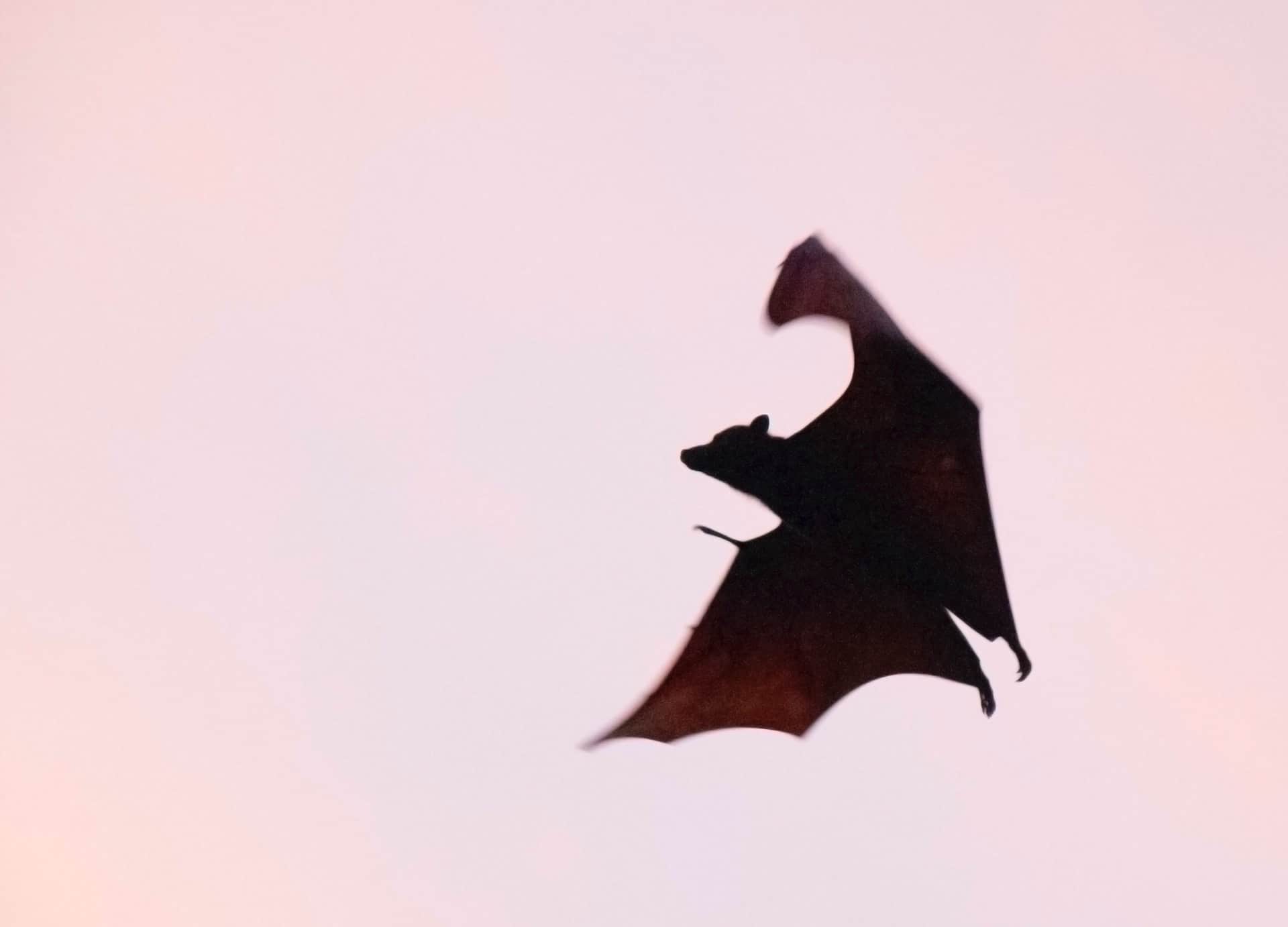
No vampire bats can be found in the United States apart from the ones in zoos.
Only three kinds of vampire bats can be found in Latin America, while no other bats can be found in the United States apart from those in captivity. These species of bats feed exclusively on blood.
Animal Planet stated that the vampire bats are the third most feared animal in the world.
In a poll made by Animal Planet, results showed that bats rank in third among the most feared creatures in the world. The fear of bats is also known as Chiroptophobia.
Many have stated that the reason to fear this mammal is due to its ability to transmit diseases such as rabies.
The oldest known fossil of a bat was stated to be over 50 million years old.
This microbat fossil is also known as the Icaronycteris index. This fossil was discovered near the vicinity of Yellowstone Park in Wyoming.
Scientists have stated that this fossil originates from the Eocene period. Remains ranged from teeth and fossilized skeletons of the bat.
Only around 5% of caves located in the United States are suitable to be habitats for bats.
There are only a few natural caves found in the United States that carry the right temperature and water conditions that are suitable for bats to live in. Many bats also prefer to stay in caves close to foraging sites for better hunts for food.
Bats have bigger brains than birds.
Research has found that for its size, bats have relatively larger brain sizes than migratory birds. This is believed to be so because bats require this to survive better throughout the seasons in their respective habitats.
Several studies have also linked brain sizes between the two with their natural survival capabilities.
A bat house located at the University of Florida holds over 100,000 free-tailed bats.
The Bat House at the University of Florida is considered to be the largest bat house in the world. In this compound, some of the most common species of bats found are the Brazillian free-tailed bats and as well as the Tadarida Brasiliensis.
The compound is also welcomed to guests to observe the bats during their daily life in the bat house. This compound was first established in March 1991.
Vampire bats require enough blood to match their weight to survive.
This amount of blood is the minimum they need to survive. For a real vampire to drink this equivalent, they would need a complete table of guests each night to match the weight of an average man.
It is very rare for a vampire bat to attack a human being.
Research has found that cases of bat attacks on humans rarely occur. This is because vampire bats typically feed on livestock or domestic animals as their food source.
However, due to vampire myths and legends, many still fear that these small mammals may come to attack them when closing in.
More than half the population of bats in the United States are endangered.
This is mainly due to habitat loss which prevents bat colonies from surviving from predator attacks. Some also perish due to white-nose syndrome which is classified as a disease of bats that affected millions of colonies.
The wings of a bat are made up of finger bones that are covered by a thin layer of skin.
Bat wings are made up of two thin layers of skin that are stretched over the arms and fingers of the mammal. Like humans, bats also have four fingers and a thumb which spans longer than its body.
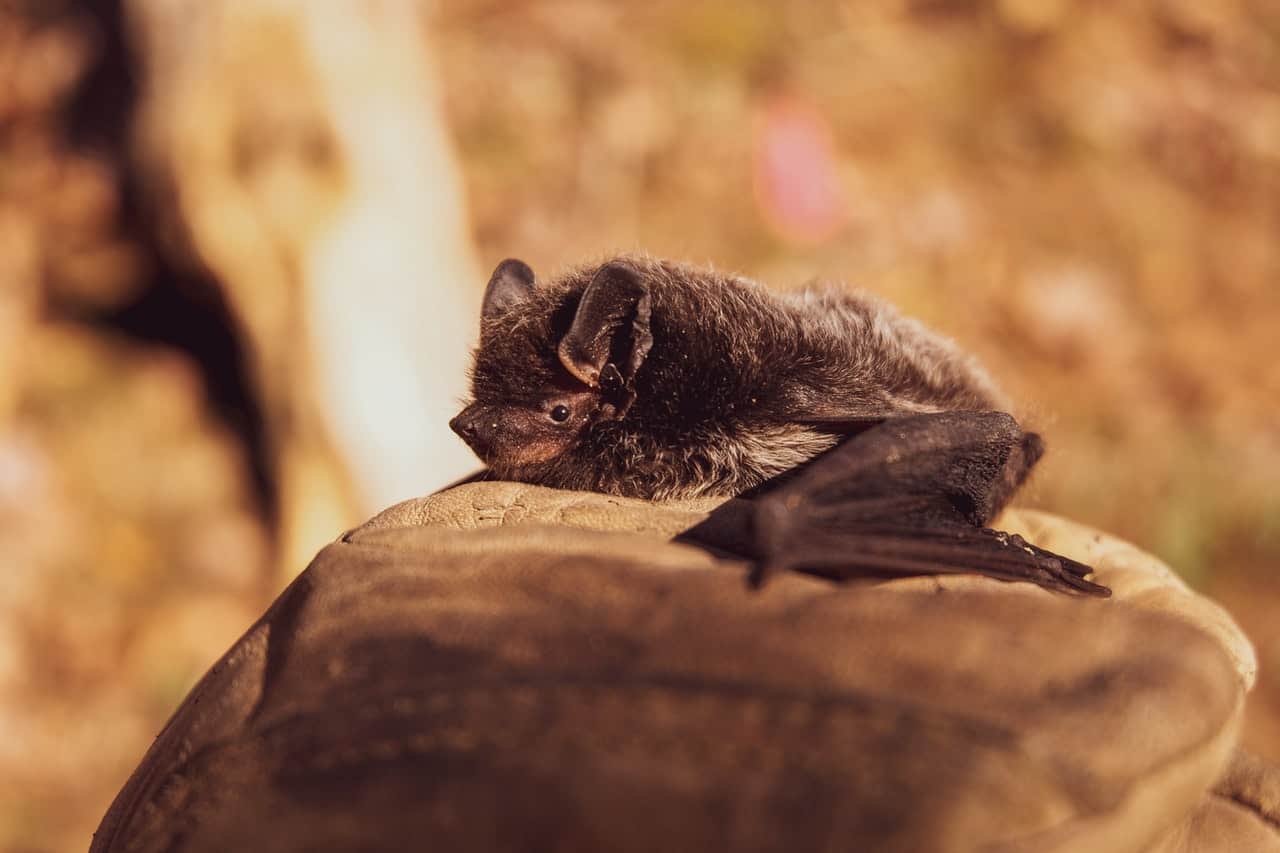
A few white-winged bats will occasionally snuggle up to hens and pretend to be its chick.
This species of bats are known to attach themselves onto hens and pretend to be a baby chick. The is then put into a relaxed state where the vampire bat is free to feed on the hen’s blood.
Typically, the white-winged bat will settle itself underneath the hen where the blood flow is the heaviest. Some bats will also settle themselves on the back of the hen.
Bats spread millions of seeds annually from the ripe fruit they eat.
A bat will spread fruit seeds by ingesting the fruits first and then digesting the pulp that surrounds the seeds. Afterward, the seeds will be defecated around the area while the bat is flying.
For bats, seed retention can last up to 20 minutes.
Vampire bats do not suck blood.
Vampire bats use heat sensory to locate the veins of their victims before cutting into their skin with their fangs. A chemical in its saliva is then released which prevents the blood from clotting.
The vampire bat then uses its tongue to lick out the oozing blood from its victim until it is satisfied.
Bat house kits can be ordered online offered by the Organization of Bat Conservation (OBC).
These kits are useful to lure bats away from households and communities. The OBC offers this kit in an attempt to preserve bat species from going extinct in the area.
Bats that are attracted to these houses are also able to reduce the population of mosquitos and pests around the area.
Bats will sometimes share their food with its roost.
Some vampire bats will share meals it has found with its roost when hungry. This is shared with other bats by vomiting into their mouths.
This is often done among males who fail to find food while hunting at night.
The scientific name for the bat is Chiroptera.
This comes from the Greek word which translates to ‘hand wing’ in English. This is derived from the bat’s wings as it is made of a thin layer of skin that stretches around its fingers.
Vampire bats can tell humans apart by the way they breathe.
Since vampire bats feed solely on the blood of its prey, it has adapted and learned to distinguish different species and individuals by their breathing pattern. It is considered rare for a vampire bat to bite a human being, but once they do the chances of them being bit again is higher.
This is because the bat will now be able to distinguish its former victim from other people by familiarizing themselves with how they breathe.
Vlad the Impaler is considered the original human vampire.
Although the story of Dracula is purely fictional, many stories have been inspired by Vlad the Impaler. However, many people have linked a real connection between Vlad and real vampires in the past.
This created many rumors and stories after his death which stated that he still roams the earth looking for prey. Some believed that he had taken on a form of a bat in his next life.
Traditionally, fruit bats are a source of food for people who live in Guam.
In Guam, fruit bats are eaten and are considered a delicacy. However, because of this particular diet, bats in the country are now listed as endangered. Only around 8% of bat species can be hunted for food and are considered safe for human consumption.
Bats were once called bald mice or vagabonds.
This name was brought into concept due to the bat’s appearance. Since they do not have too much fur on their bodies, they often look like bald mice that fly around.
In the past, bats have also been called Flitter Mice and Slang Bats. In Germany, bats have also been called Fleder Mauser.
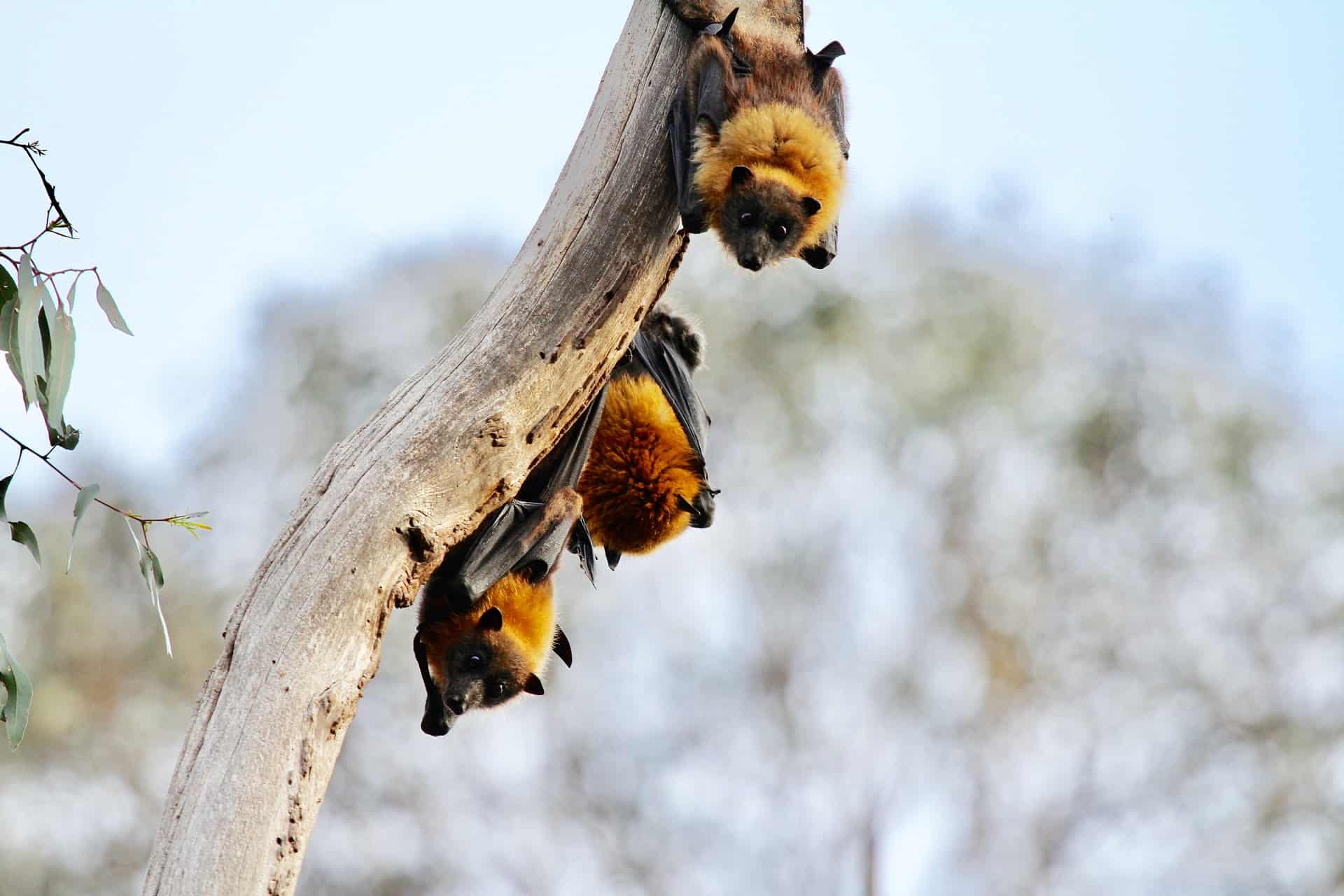
The heartbeat of a mouse-eared bat is as low as 18 beats per minute during hibernation.
When active during other seasons, the heartbeat of the mouse-eared bat races as much as 880 beats per minute. However, depending on the species of bat, its active heartbeat can span up to 1,000 beats per minute.
When resting, this slows down dramatically to anywhere between 10 to 200 beats per minute.
The droppings of bats are called guano.
These droppings are considered to be highly effective fertilizers mainly due to the components it contains. Guano often contains rich sources of nitrogen, phosphate, and potassium that are considered key components for rich plant growth.
It is believed that the first bats were discovered 65 to 100 million years ago.
According to scientists, bats could have first appeared on earth sometime during the age of the dinosaurs. Some research has also led scientists to believe that megabats may be closer related to primates such as monkeys and humans than microbats.
Vampire bats are the only species of bats that can move well on the ground.
These species of bats are the only ones that can maneuver around on the ground. Much like a spider, vampire bats can also move side to side and as well as frontwards and backward.
Out of over thousands of discovered species of bats, only three are classified as vampire bats.
Some species of bats can create ultrasound echolocation through their nostrils.
More commonly, bats will open their mouths to release their ultrasound echolocation. However, some species of bats can do this through their nostrils.
This is possible for the basal fleshy horseshoe structure in their bodies that act as megaphones.
In countries such as China and Japan, the bat is considered a symbol of happiness.
This is because of how similarly the word for bat sounds like the word for happiness in their language. In both languages, the word for bat and good fortune can be pronounced as fu.
In Chinese culture, the bat is considered to be the most important of winged creatures as it represents good opportunities and luck.
The tale of Dracula originated in Eastern Europe.
Historically speaking, this would imply that the existence of real vampires to be false. This is because real vampire bats can only be found in parts of Central and South America.
Despite this, many believe that real vampires can be found hidden around parts of Europe.
The largest known bat colony in the world is located in the Bracken Bat Cave in Texas.
It is estimated that around 20 million Mexican free-tailed bats roost in this cave between March to October. This cave can be found in the Southern part of the Comal County in Texas right outside the city of San Antonio.
This cave is also known to have the highest concentration of mammals in the world.
A small colony of bats typically eat more than one ton of insects annually.
This is equivalent to more than 600 million insects a year. On average, a single bat can consume around 1,200 mosquito sized insects within an hour.
In a day, they can eat an average between 6,000 to 8,000 insects each.
There are two main groups of bats called Megachiroptera and Microchiroptera.
The group of Megachiroptera includes species such as Old World fruit bats while the group of Microchiroptera includes bat species that are non-fruit bats. The Megachiroptera group also generally has larger bats with wig spans that span up to a meter and a half.
On the other hand, the Microchiroptera group are generally smaller bats that can be found in nearly all parts of the world.
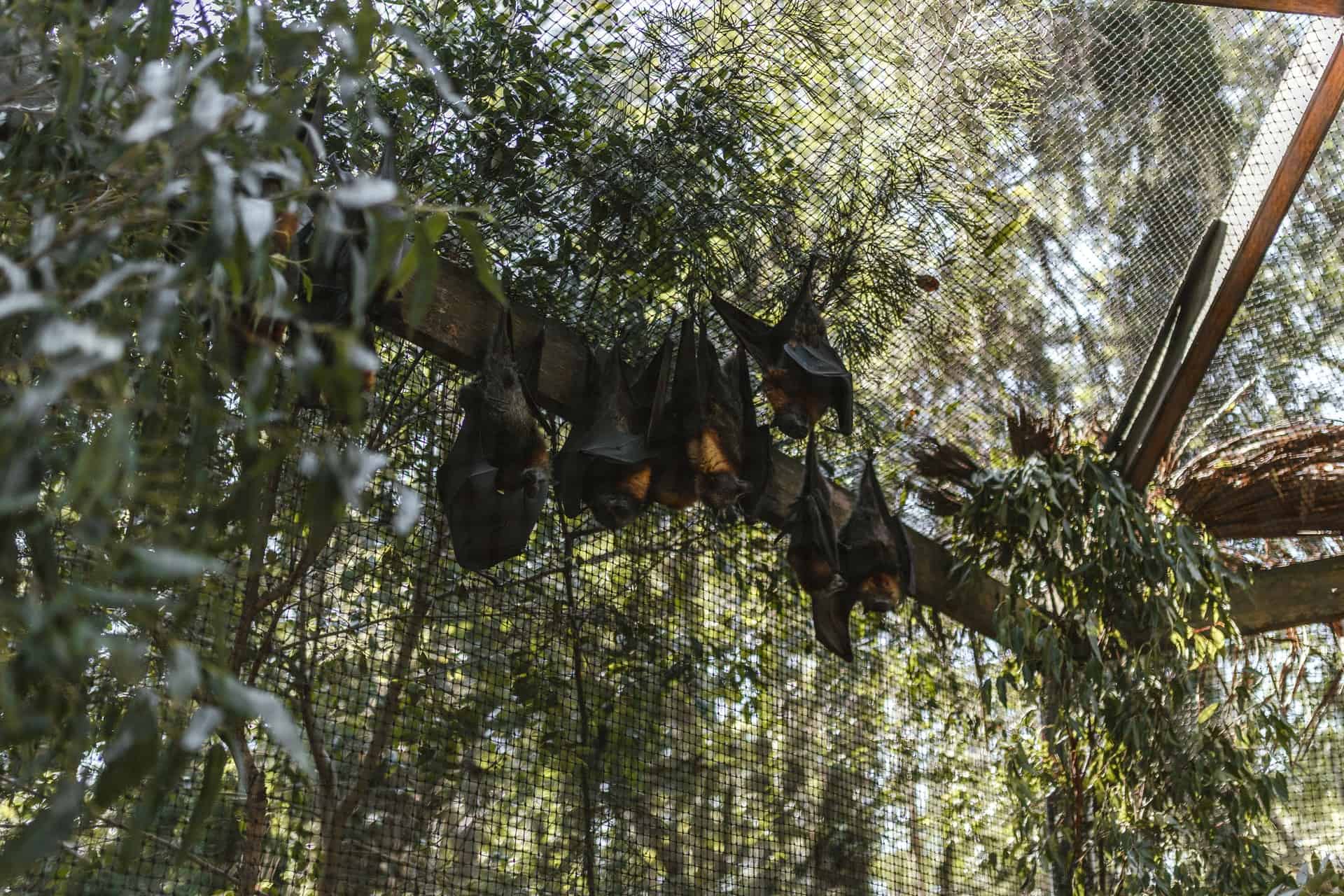
Bats have long been associated with witchcraft in North America and Europe.
In cultural folklore, bats were often used as ingredients for medicines and potions in witchcraft. In old European traditions, bats were also considered to be creatures of the night which associated them with beliefs such as demons and such.
Some also believe that bats are used by witches to spy on people during medieval times.
A bat eats more than 600 insects an hour.
A bats typical diet consists of either consuming fruits or several insects to get through the day. On average a bat can consume over 600 insects an hour but can also eat as much as 1,000 small insects in total within that period.
Only 3 species of bats are classified as vampire bats.
These species are known as the common vampire bat, the hairy-legged vampire bat, and the white-winged vampire bat. Out of the three, the most common species is the Desmodus Rotundus, or the common vampire bat.
The pipistrelle bat weighs less than two pennies.
This species of bat is typically 4 centimeters in length and weighs around 5 grams on average. It is also part of the microbat group and can be found in locations across Europe and Southwestern Asia.
The pipistrelle bat is one of the most common species of bat found in the British Isles.
Researchers have discovered that the female short-nosed fruit bat performs oral sex.
This bat species is the first to be discovered to perform oral sex while mating. The Guangdong Entomological Institute in China stated that the female of this bat species would often lick the male shaft during mating interactions.
This behavior has been observed among 70% of females. Scientists have also argued that this could have evolutionary benefits.
The world’s largest bat is the golden-crowned flying fox.
This particular bat is considered rare as they can only be found in the Philippines. This species of bat has a wingspan of up to 5 feet and 6 inches long and weighs nearly 3 pounds.
This bat is considered non-aggressive towards humans and mainly thrives for raw fruit.
Megabats have better-developed brains compared to microbats.
This allows the Megabats to better make use of their senses such as sight and smell. Megabats also rely significantly less on their echolocation unlike with Microbats.
In Southeast Asia, a species of bats roost inside bamboo stalks.
The small club-footed bat roosts inside bamboo stalks in Southeast Asia. These bats squeeze into small holes with openings that can be as small as 0.4 inches wide.
These bats roost together in the internodes of the bamboo stalks and as well as the hollow spaces between the plants.
The myotis bat has a lifespan of almost 40 years.
This brown bat lives significantly longer than most mammals of the same size. On average, a bat has a lifespan of around 20 to 40 years depending on the species.
Unlike with other species and animals, the telomere of a bat does not shorten with age.
The small woolly bat in West Africa lives in large spider webs.
These small bats will often take refuge in colonial spiders’ webs found in Africa. They also serve as the primary dispersers of young spiders to new locations.
However, some bats found in South America will construct their shelters by cutting pieces of banana leaves into structured tents.
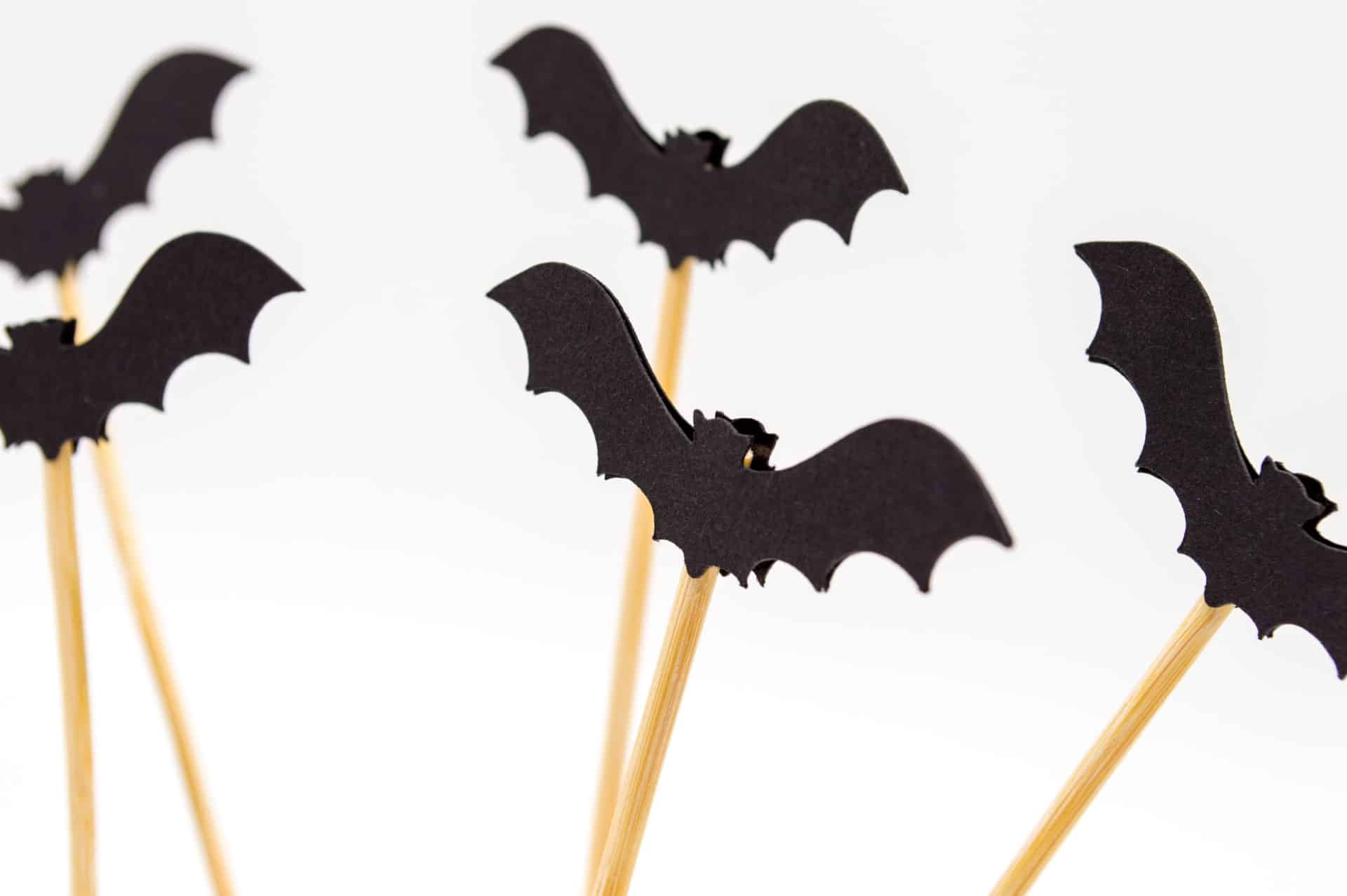
Bat themed items are a common decoration during the celebration of Halloween.
Halloween is popularly associated with ghosts, spirits, and witchcrafts. As such, the bat is one of the most widely used themes for decorations during this holiday.
Bat decorations will often be made out of paper or plastic models that are hung around the high corners of a wall or window. Some attractions also make use of the sound of bats flying around for sound effects.
Around 70% of bats consume insects as part of their diet.
This pertains mainly to tropical bats that also feed on other things such as fruit and plant nectar. Apart from insects, some bats will also hunt small vertebrates such as fish, frogs, mice, and small birds.
Bats are considered the slowest reproducing mammals in the world for its size.
On average, a bat will give birth to an offspring once a year at most. More commonly, bats that are found in the United States typically mate in the fall before hibernation begins and will give birth during the spring or summer.
Baby bats will have reached their full adult size by the age of three months and are then capable of hunting and fending for themselves.
The Mexican free-tailed bat can fly a length of 250 miles in a single night.
On average, the Mexican free-tailed bat can fly up to 60 miles per hour. These bats can also fly up to 10,000 feet up high into the air.
However, the lifespan of these bats is shorter than average with a lifespan of 18 years.
Bats are stated to have evolved independently from birds
Some researches suggest that bats have independently evolved their ability to fly from birds. This also serves as an example of recurrent evolution that traces back to its prehistoric ancestry.
The wings of a bat and a bird are considered analogous and a result of convergent evolution. Scientists state that these wings were inherited by the forelimbs of its ancestors and not wings itself.
Bats flap their fingers rather than their wings.
Unlike other flying species such as birds, bats do not use their wings. All bats will move their forelimbs entirely and maneuver with their fingers when taking flight.
Bats also have much more flexible wing structures, unlike birds. These wings are also able to move around much similar to that of a human’s arm.
Bats have pseudo-venous hearts.
This states that when a bat flies, it causes a centrifugal effect that traps blood to the outer edge of its veins. Their wings also have muscular areas around the tip of their wings that can squeeze blood back inwards.
This allows bats to bring back blood and allow it to circulate their bodies.
Scientists have discovered that bats need to use their muscles to open their claws.
Bats are known for having short legs with knees and claws. However, these claws are also quite powerful and allow bats to hang upside down for prolonged periods without any trouble.
Studies have found that the claws of a bat are naturally closed and require the use of several muscles to open them.
Bats typically wash behind their ears when grooming themselves.
Many species of bats groom themselves constantly similar to how often a cat will keep its fur clean. Bats will lick themselves thoroughly to clean themselves when hanging upside down.
This allows the fur of the bat to keep their soft texture and keep clean from any dirt or dust. Some vampire bats have also been found to engage in social grooming much more than any other bat species.
Scientists believe that bats developed their ability of flight first before echolocation.
According to research, some well-preserved fossils of prehistoric bats show signs that primitive bats were not able to use any form of echolocation in the past. This would mean that these bats from prehistoric times were only able to fly around and rely on their senses to look for food.
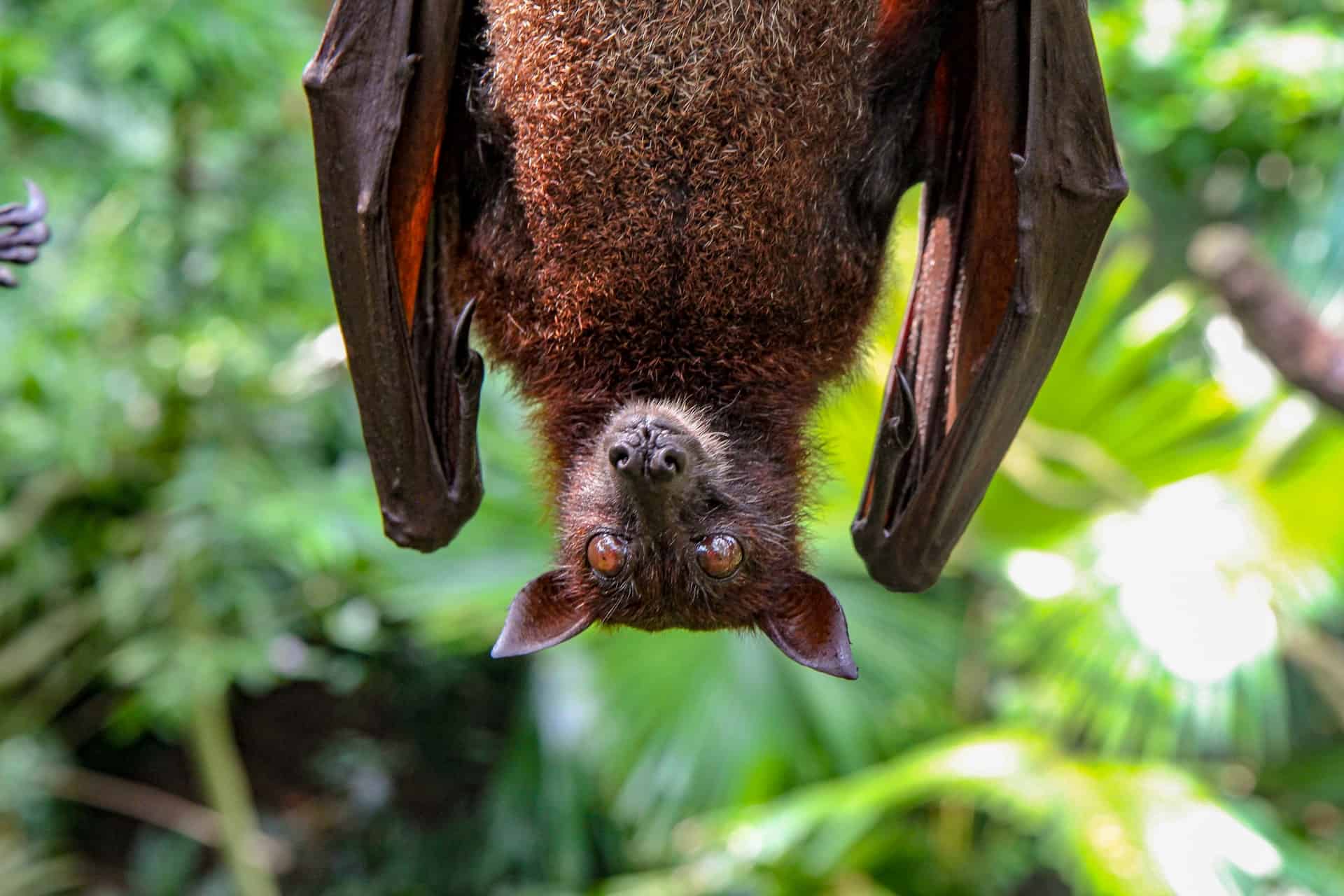
Bats are described to be more like fish in the air than birds.
Due to its flexible wing structure, the wings of a bat are much different from that of a bird. They also do not need to flap their wings as much as a bird does to keep still in the air.
As a result, these mammals have often been described to glide or swim through the air rather than fly.
Bats are prey to several animals such as birds, snakes, and weasels.
Bats have several natural predators in the wild which are often bigger than their average size. One of the biggest threats to bats are birds such as owls, eagles, and hawks.
Snakes are also known to prey on bats when found grounded or hanging in a tree.
These mammals can digest fruit within 20 minutes.
Bats have one of the highest metabolism rates in the animal kingdom. With minimum resting, a bat can digest 3 to 5 times faster than any other mammal.
After eating, it takes an average of 5 hours for a bat to defecate its food.
Bats keep warm by folding their wings around their bodies.
During winter and cold seasons, bats will hang upside down in caves and fold their wings around themselves to keep warm. This allows the bat to trap its body warmth and circulate its body underneath its wings.
Some colonies will also have bats huddling near each other to share body heat and insulate it.
Bats are considered great swimmers.
Many bats are capable of swimming and appear like small rowboats in the water. In small bodies of water, bats will crawl over to the side and look for a tree to climb out and use to fly away.
However, in certain locations such as pools, the walls make it difficult for a bat to climb out of the water. This could cause them to become stuck floating in the water for some time.
Was this page helpful?
Our commitment to delivering trustworthy and engaging content is at the heart of what we do. Each fact on our site is contributed by real users like you, bringing a wealth of diverse insights and information. To ensure the highest standards of accuracy and reliability, our dedicated editors meticulously review each submission. This process guarantees that the facts we share are not only fascinating but also credible. Trust in our commitment to quality and authenticity as you explore and learn with us.
